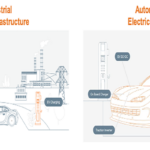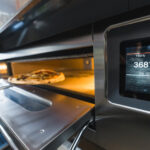Electrical energy is often used to generate heat via various basic principles of physics. Part 1 looked at the three ways electrical energy and power are used to create heat, using resistive, inductive, and dielectric-based principles. Dielectric-based heating Q: What is dielectric heating? A: Dielectric heating is non-intuitive, hard to grasp, and the contradiction of […]
FAQ
FAQ on using electricity to generate heat: part 1
Electrical energy is often used to generate heat via various basic principles of physics. Every engineer knows about heat, an omnipresent companion to nearly all electrical, mechanical, and chemical processes. In some cases, this heat creation is intentional and desirable; in others, the heat is unavoidably a consequence of normal operation and is detrimental. This […]
How soft switching and SiC devices improve power conversion
By Mike Zhu, Qorvo Soft switching in DC-DC converters reduces energy loss. SiC transistors allow for higher switching frequencies and, thus, smaller magnetics, which reduces heat. Efficiency and power density are both essential factors in the design of power converters. Every contributor to energy loss generates heat that needs removal by costly and power-hungry cooling […]
The why and how of matched resistors: part 2
Paired resistors with low-temperature drift are critical to many precision analog circuits. The previous part discussed the need and “why” for matched resistors, as well as errors due to tolerance and TCR. This section transitions to their physical embodiment and looks at the “how” of obtaining needed matched resistors to minimize errors, temperature-related effects, and […]
The why and how of matched resistors: part 1
Paired resistors with low-temperature drift are critical to many precision analog circuits. Achieving high performance, precision, and consistency in an analog signal chain requires attention to subtle details. In many cases, these details include the absolute accuracy of passive components such as resistors and the more subtle effects on component characteristics due to aging, mechanical […]
Increasing voltage demands unleash opportunities for SiC devices
By Didier Balocco, onsemi The trend towards higher voltages opens new opportunities for design with Silicon Carbide. With its higher electron mobility, lower losses, and ability to work at higher temperatures, the case for silicon carbide (SiC) devices in challenging power applications is widely accepted. While the benefits of silicon are significant in key applications, […]
What electric motors and drives are used in pizza ovens?
The types of electric motors and drives depend on the style of the oven. Deck ovens usually don’t have any motor. Rotating and conveyor ovens are available with a variety of motor types, and each type of motor uses a specific drive technology. This article looks at some typical uses for brushed direct current (BDC), […]
High-density power-conversion technology enablers using GaN
By Brent McDonald, Texas Instruments Modern electronic systems need small, lightweight, high-efficiency power supplies. These supplies require cost-effective methods to take power from the AC power distribution grid and convert it to a form that can run the necessary electronics. High switching frequencies are among the most significant enablers for small size. To that end, […]
How to quantify pulse current capability of SiC FETs
Silicon Carbide FETs go beyond silicon to extend reach to high pulse currents in power conversion applications. Wide bandgap (WBG) semiconductor devices, such as Silicon Carbide (SiC) field-effect transistors (FETs), are renowned for their minimal static and dynamic losses. Beyond these attributes, this technology can endure high pulse currents, proving particularly advantageous in applications like […]
Zonal automotive power distribution can dramatically improve efficiency, weight, and cost: part 3
If something can’t go on, it won’t; supplying the automobile’s voracious electrical demands from a 12-V battery is an example of this reality. If you haven’t already, check out Part 1 and Part 2 of this discussion. Under the zonal architecture, many legacy loads will still be supported by a 12-V battery or its functional […]











